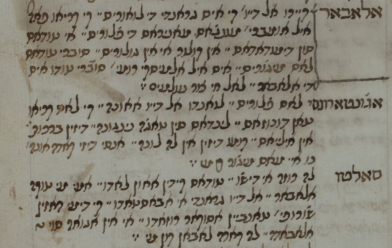Jacob Algava
1. Los árboles de almendra (Jacob Algava)
This is the earliest recorded version of this cantiga. It became extremely popular in the modern Ladino repertoire after it appeared in the first post-World War II commercial LP of songs in Ladino (Gloria Levy 1958, no. 17). It is also widely documented among Sephardic immigrants in Israel. Its text is quite stable in all known versions, sometimes with the addition of a fourth stanza. Haim Effendi recorded another version of this song in 1922 (Orfeon 13125, see Bresler). In most modern popularized versions, the last line of the second stanza is used as a refrain. This refrain appears to be a modern development, for none of the earlier printed versions of Los árboles de almendra includes it (e.g. Bassan 1947, no. 95; Molho 1960, no. 37; Attias 1972, no. 80; Hemsi 1995, no. 92). The music is inspired by the Greek folk song Σε ωραίο περιβóλι (In a pretty garden; see, Bourgault-Decoudray 1877, no. 15; Seroussi 1999). The melody of this song was also adapted to the piyyut Yigdal Elohim hay (Weich-Shahak 1980, side B, no. 5). See also Kalyviotis 2015, pp. 113-114.
Arboles d’almendra que yo plantí
por los tus ojos vedrolis.
S’hinchiron mis ojos y mis brazos
de los tuyos trenzados.Por una niña d’ojos pretos me va muerir
la puerta quero abrir.
Dame lecencia niña que yo pur ti
que yo pur ti muncho sufrí.La puerta de mi querida se abrió,
de lagrimas s’hinchó.
Como la primavera qu’ansi salió
la bella que yo amo.







